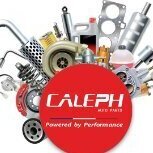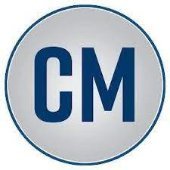-
Welcome to Auto Parts Forum
Whether you are a veteran automotive parts guru or just someone looking for some quick auto parts advice, register today and start a new topic in our forum. Registration is free and you can even sign up with social network platforms such as Facebook, X, and LinkedIn.
Replacement Intervals For Oil And Air Filters In Today’s Vehicles
-
Similar Content
-
- 0 replies
- 445 views
-
Why You Should Recommend High-Quality Oil Filters - Video
By Alex,
- oil filter
- oil filters
- (and 1 more)
- 0 replies
- 2,416 views
-
- 0 replies
- 2,127 views
-
-
Similar Topics
-
By Counterman
March 31, 2025, marked a milestone in engine oil development—the first license date for the
link hidden, please login to view. While that might sound like just another specification in a long line of upgrades, for professional parts counter pros selling to independent repair shops, it’s a moment that carries real-world impact. Understanding what’s new—and how to help shop owners explain it to their customers—could be the difference between a routine oil sale and a value-driven recommendation. First, What Is GF-7?
GF-7 builds on the progress of the GF-6 specification introduced in 2020. Like its predecessor, GF-7 is split into two categories: GF-7A for most modern gasoline engines and GF-7B for low-viscosity formulations like 0W-16, commonly used in vehicles from Japanese OEMs like Toyota. The key takeaway? GF-7 oils are fully backward compatible. If a customer’s vehicle previously called for GF-6, GF-5, or even GF-4, a GF-7A product can safely be used. For 0W-16 applications, GF-7B covers those needs—just make sure the shop isn’t using a 0W-16 oil in an engine not designed for it.
“When they developed the GF categories almost 30-plus years ago, the idea was that it’s an evergreen category, so they’re all backward compatible,” Dr. Michael Warholic, global technology director,
link hidden, please login to view. “The caveat is that GF-7B category. Some engines don’t like thin oil because they’re just not made to operate that way. You have to be careful about misapplication. “The OEMs identified that and developed a shield icon with 0W-16 label to make it easy to identify it versus 0W-20 or heavier oil,” he said.
How to Identify GF-7 on the Shelf
Paying attention to the API designation and symbols on the bottle is key. Counter pros should be looking for the API “donut” and the Starburst or Shield symbols:
• The Starburst still signals general GF-category oils (GF-7A).
• A Shield symbol identifies 0W-16 oils under the GF-7B track.
• Look for API donut to know it’s GF-7.
“It boils down to: if you see the Starburst, it’s a qualified GF oil. If you see the donut on the back, it has the API credentials on it,” Warholic explained.
There’s a one-year transition period where GF-6 oils will still be in circulation, but by March 2026, GF-7 will be the standard.
“Model Year 2026 is when we expect the OEMs will start to notice GF-7 oils in the owner’s manual,” added Karl Kocher, director of light duty product strategy, Valvoline.
Why Should Your Shop Customers Care?
Not all oils are created equal, and consumers are becoming more selective. GF-7 brings improvements in durability, fuel economy, wear protection and emissions performance. This includes:
• Deposit control: GF-7 increases limits on piston cleanliness to limit deposits, helping prevent buildup that can lead to costly repairs like ring sticking.
• Wear resistance: Chain wear limits are tighter to protect timing systems and avoid check-engine lights.
• Cold start protection: Improved low-temp viscosity performance means oil flows better when the engine is most vulnerable—at startup.
• LSPI protection over time: GF-7 includes a new test for aged oil’s ability to resist Low-Speed Pre-Ignition, protecting direct-injected turbo engines long after the oil change.
• Ash limit: For the first time, GF-7 introduces an ash cap to help reduce emissions—a nod to the increasing regulatory pressure on internal combustion engines.
Selling the Upgrade
In addition to standard GF-7 products, some oil suppliers are offering “above and beyond” formulations. Valvoline’s Restore & Protect, for example, is a fully synthetic motor oil that aims at both older, high-mileage vehicles (restore) and new vehicles (protect). While the oil sports a proprietary formulation, Valvoline has noted two proprietary technologies–Active Clean, which removes deposits, and Liqui-Shield, which prevents deposit formation.
“The active technology behind the Restore and Protect products is the same in our GF-6 and our GF-7 products,” Warholic confirmed. “For GF-7, it’s built on a slightly different platform to meet the requirements. The Restore and Protect technology is above and beyond even the deposit performance required for GF-7. It exceeds that performance and does something that no other oil does or that’s actually required by GF-7. It is our own proprietary technology.”
That’s especially valuable in older engines that were exposed to less advanced oils under earlier standards like GF-4 or GF-5. With Restore and Protect, your shop customers can offer a tiered service—a standard GF-7 oil for maintenance, or R&P for vehicles showing signs of engine wear or for customers wanting the best protection available.
Bottom Line for Counter Pros
• Understand the labeling: Starburst = GF-7A; Shield = GF-7B; look for API SQ on the donut.
• Ask about the vehicle: Year, model, and what oil is currently being used.
• Explain backward compatibility: GF-7 oils replace earlier categories in most cases.
• Be proactive: As model year 2026 approaches, shops will need help identifying the right oils—GF-7A or GF-7B—and transitioning their inventory.
GF-7 isn’t just a new acronym—it’s the new baseline. The counter pros who get ahead of it now will be the ones their shop customers rely on tomorrow.
The post
link hidden, please login to view appeared first on link hidden, please login to view.
link hidden, please login to view -
By Mighty Auto Parts
The post
link hidden, please login to view appeared first on link hidden, please login to view. The C6 Corvette was just removed from winter storage and was about to receive a complete service. The engine roared to life and the instrument panel reflected a systems check. Bulbs were illuminated and would time out, indicating that systems or components were functioning as normal. Moments later, a warning lamp resembling an occupant holding […]
The post
link hidden, please login to view appeared first on link hidden, please login to view.
link hidden, please login to view -
By Dorman Products
Programming instructions | Dorman replacement keyless entry transmitter fobs for GM vehicles
-
By Counterman
WIX Filters recently announced the six grand-prize winners of the 2024 85th Anniversary Promotion and Sweepstakes. WIX Filters customers from across the U.S. and Canada participated in the eight-month-long program. Winners were selected in a random drawing of qualifying entries submitted from April 1 through November 30, 2024.
Grand-Prize Winner: Dave Ledbetter of Spokane, Washington
Dave Ledbetter of Spokane, Washington, won the top grand prize: a Polaris General XP 4 Ultimate Side-by-Side vehicle. Ledbetter works for Jobbers Automotive Supply. The business is a distributor that provides products and services to dealerships, collision centers and auto body shops.
Second-Place Winners: Barb Bosshammer and Greg Henry
The two second-place winners were Barb Bosshammer from Kearney, Nebraska, and Greg Henry from Monroe, Louisiana. Both of them won a Polaris General 1000 Sport Side-by-Side vehicle.
Third-Place Winners: Brendan Middleton, Blaine Wilson, and Dennis Daniel
Three individuals received third-place prizes. Brendan Middleton from Guelph, Ontario, Blaine Wilson from Manchester, Iowa and Dennis Daniel from Dickson, Tennessee, each won a Polaris Sportsman Touring Four-Wheeler.
Additional Prizes in the 2024 WIX Filters Sweepstakes
WIX Filters awarded nearly 370 total prizes in its 85th Anniversary promotion, valued at $150,000. Other prizes included a YETI® Tundra 45 cooler, a WIX Filters 85th Anniversary 1939 International D2 Pickup diecast model, a
link hidden, please login to view85th Anniversary insulated wine tumbler, and a WIX Filters 85th Anniversary hat. Celebrating 85 Years of Loyalty and Support
“At WIX Filters, we chose to celebrate the 85th anniversary by giving back to the people that represent our brand day in and day out—our customers. We would not be where we are today without their unwavering loyalty and support,” said Carmina Lopez, marketing manager of WIX Filters. “We look forward to powering into the next 85 years alongside the dedicated individuals who share our passion and commitment to creating the best filter in the world.”
WIX Filters Delivers Prizes to Sweepstakes Winners
link hidden, please login to view delivered the Polaris vehicles to the grand prize winners in late March and early April. The post
link hidden, please login to view appeared first on link hidden, please login to view.
link hidden, please login to view -
-







Recommended Posts
Join the conversation
You can post now and register later. If you have an account, sign in now to post with your account.
Note: Your post will require moderator approval before it will be visible.